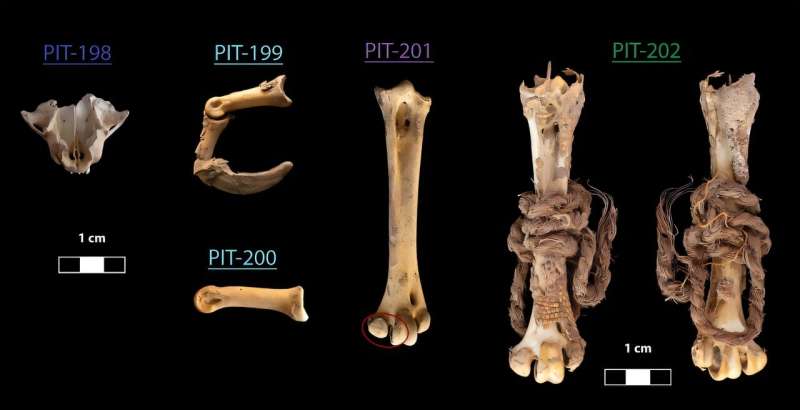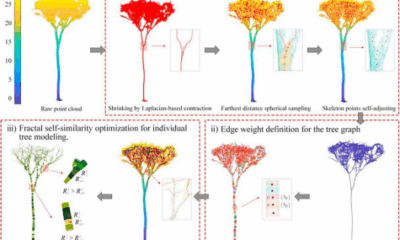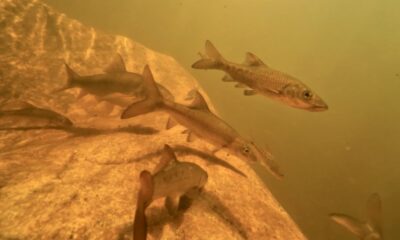Science
Ancient Condors Thrived on Peru’s Coast Before Retreating

A recent study has unveiled that ancient Andean condors once thrived along Peru’s northern coast before retreating to the interior highlands. Conducted by Dr. Weronika Tomczyk and her research team, the investigation involved zooarchaeological and isotopic analyses of condor bones found at the archaeological site Castillo de Huarmey, a significant pre-Hispanic center linked to the Wari Empire. This study marks the first empirical evidence of the condor’s historic habitat in this coastal region.
The Andean condor, recognized as the world’s largest avian scavenger, holds cultural significance in both pre-Columbian and modern Peru. Currently classified as “Vulnerable” on the IUCN Red List, the species faces threats from habitat loss, lead poisoning, and poaching. While limited historical evidence has documented the condor’s presence along the northern Peruvian coast, Tomczyk’s research offers new insights into its past.
Zooarchaeological Findings
The research team recovered a total of 64 Andean condor remains from cellular rooms known as “recintos” within the “Red Mausoleum” at Castillo de Huarmey. Analysis indicated that these bones likely belonged to at least three individual condors. Notably, the bones displayed no cut marks or signs of ancient human modification, suggesting the birds were buried intact.
Four bones were selected for isotopic analysis, a method that allows researchers to investigate different skeletal tissues. Dr. Tomczyk explained, “Isotopic analysis is a geochemical method that can be applied to archaeological investigations of different skeletal tissues… Isotopic investigations of multiple tissues provide a glimpse into the changes and continuities throughout an animal’s life.”
In examining the isotopic elements, including carbon, nitrogen, oxygen, and strontium, the researchers sought to reconstruct the dietary habits and environmental conditions of the condors.
Insights into Diet and Habitat
The isotopic analysis revealed that all four condor bones had signatures consistent with a diet influenced by a coastal, marine environment. One individual, designated P-202, exhibited a more varied diet. The researchers proposed two scenarios to explain this finding. The first suggests that this condor was a dominant bird, typically outcompeting other scavengers and thus having access to a broader range of food sources. Alternatively, it is possible that the condor had been held captive prior to burial, consuming a terrestrial diet, such as camelid meat, which was common among local populations.
The discovery of a rope tied around one condor’s leg supports the possibility of it being kept in captivity. Dr. Tomczyk noted that these findings provide the earliest empirical evidence of Andean condors inhabiting the northern Peruvian coast, but the reasons behind their eventual migration to the highlands remain less understood.
“Broader ecological changes in Peruvian condor populations are not yet well-researched,” Dr. Tomczyk stated. “However, analogous research from Chile and Argentina suggests that these environmental factors were likely anthropogenic—related to habitat loss caused by urbanization along the Pacific coast, where most Peruvians reside.”
Implications for Conservation Efforts
The findings from this study not only contribute to the understanding of the Andean condor’s historical range but also have significant implications for conservation efforts. The archaeological evidence establishes the northern Peruvian coast as a former habitat for the species, which could support initiatives aimed at reintroducing condors to these areas.
Dr. Tomczyk emphasized the importance of connecting Peru’s archaeological legacy with wildlife conservation through heritage education and eco-tourism initiatives. Nonetheless, successful reintroduction would require increased public awareness and further research on potential threats, such as heavy metal pollution near industrial ports that could jeopardize the condors’ survival.
This research, published in the Journal of Island and Coastal Archaeology, underscores the value of integrating archaeological studies into wildlife management strategies, offering a clearer picture of the past and its implications for the future of the Andean condor.
-

 Technology5 months ago
Technology5 months agoDiscover the Top 10 Calorie Counting Apps of 2025
-

 Health3 months ago
Health3 months agoBella Hadid Shares Health Update After Treatment for Lyme Disease
-

 Health3 months ago
Health3 months agoErin Bates Shares Recovery Update Following Sepsis Complications
-

 Technology4 months ago
Technology4 months agoDiscover How to Reverse Image Search Using ChatGPT Effortlessly
-

 Technology1 month ago
Technology1 month agoDiscover 2025’s Top GPUs for Exceptional 4K Gaming Performance
-

 Technology3 months ago
Technology3 months agoElectric Moto Influencer Surronster Arrested in Tijuana
-

 Technology5 months ago
Technology5 months agoMeta Initiates $60B AI Data Center Expansion, Starting in Ohio
-

 Technology5 months ago
Technology5 months agoRecovering a Suspended TikTok Account: A Step-by-Step Guide
-

 Health4 months ago
Health4 months agoTested: Rab Firewall Mountain Jacket Survives Harsh Conditions
-

 Lifestyle5 months ago
Lifestyle5 months agoBelton Family Reunites After Daughter Survives Hill Country Floods
-

 Health3 months ago
Health3 months agoAnalysts Project Stronger Growth for Apple’s iPhone 17 Lineup
-

 Technology4 months ago
Technology4 months agoHarmonic Launches AI Chatbot App to Transform Mathematical Reasoning















